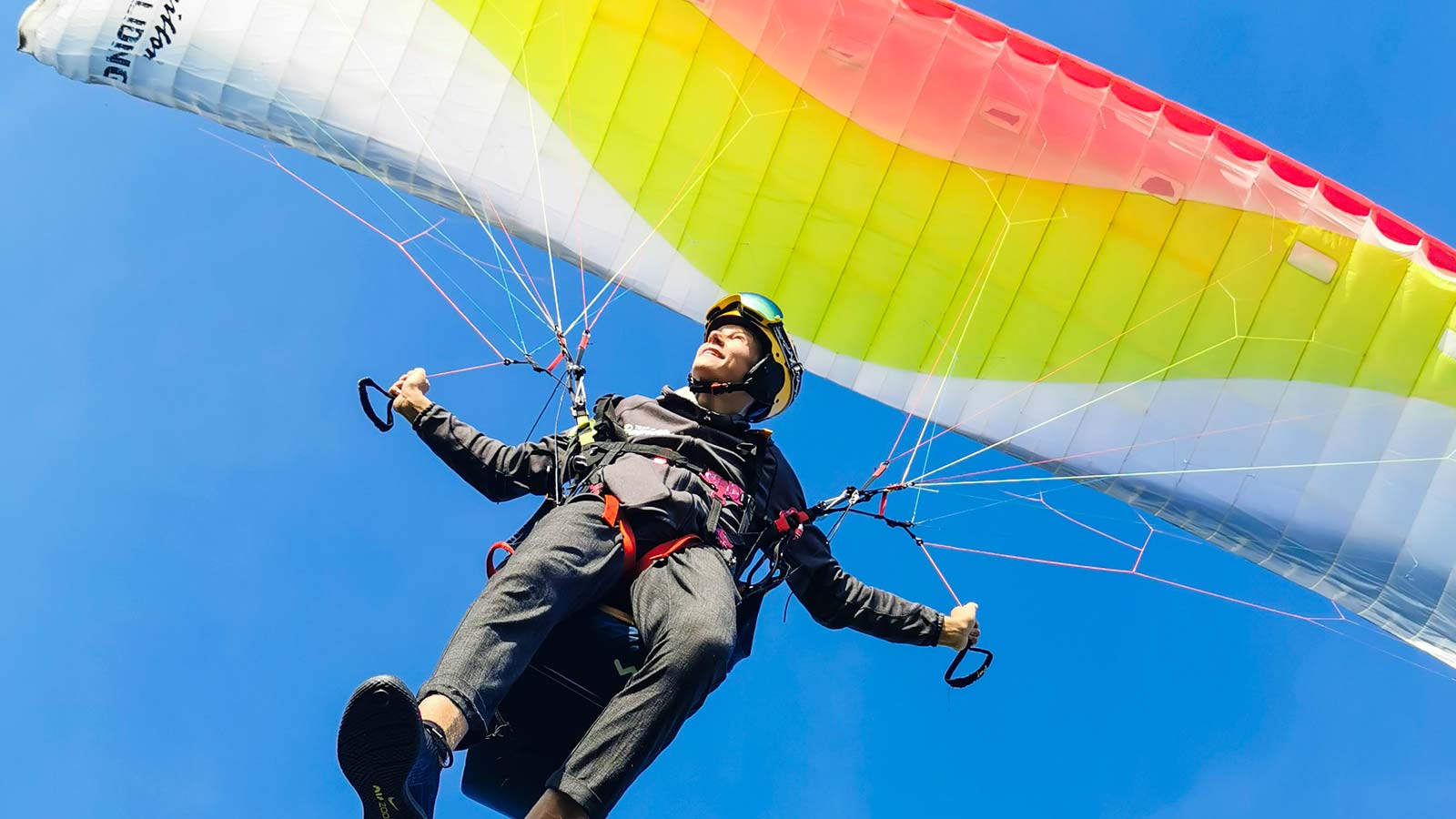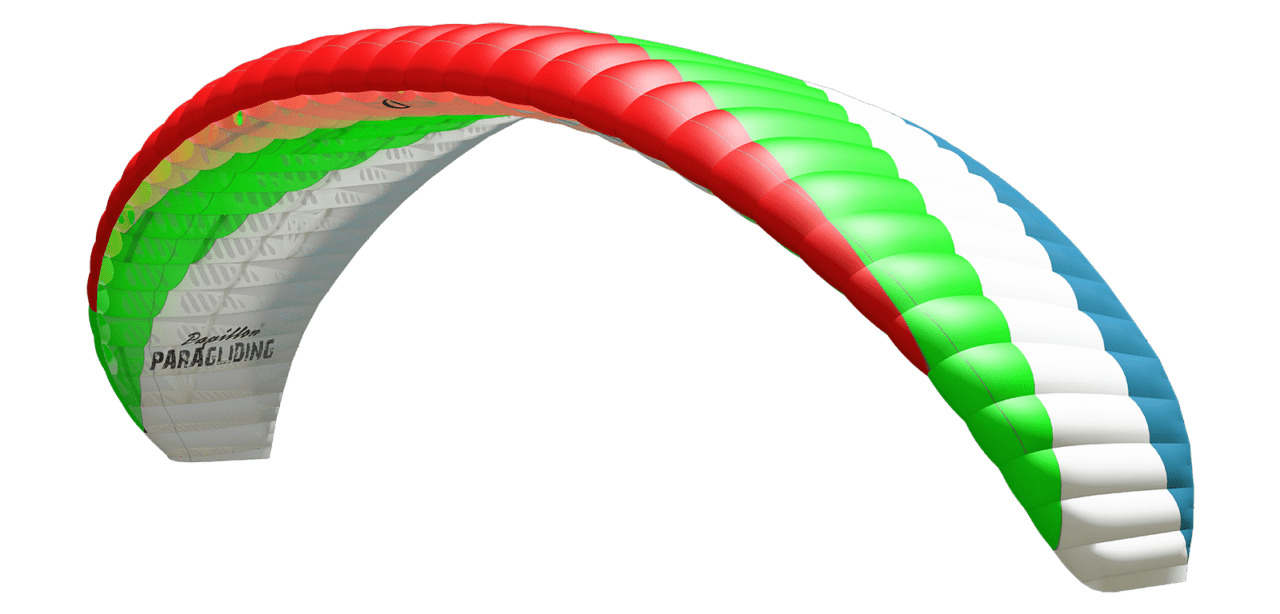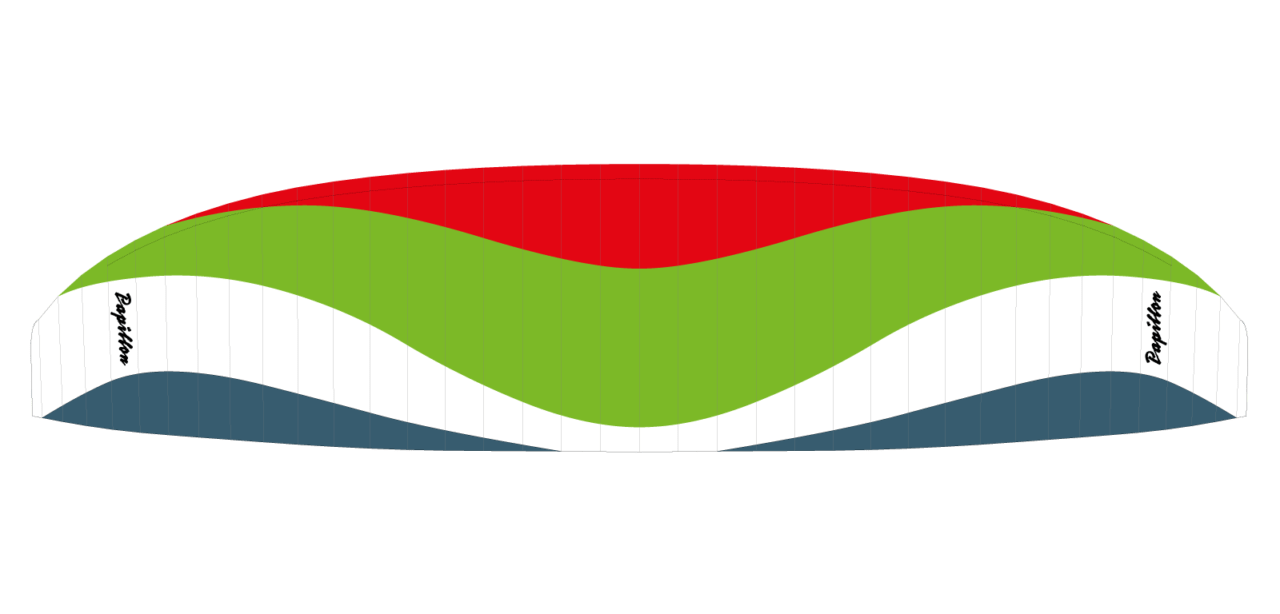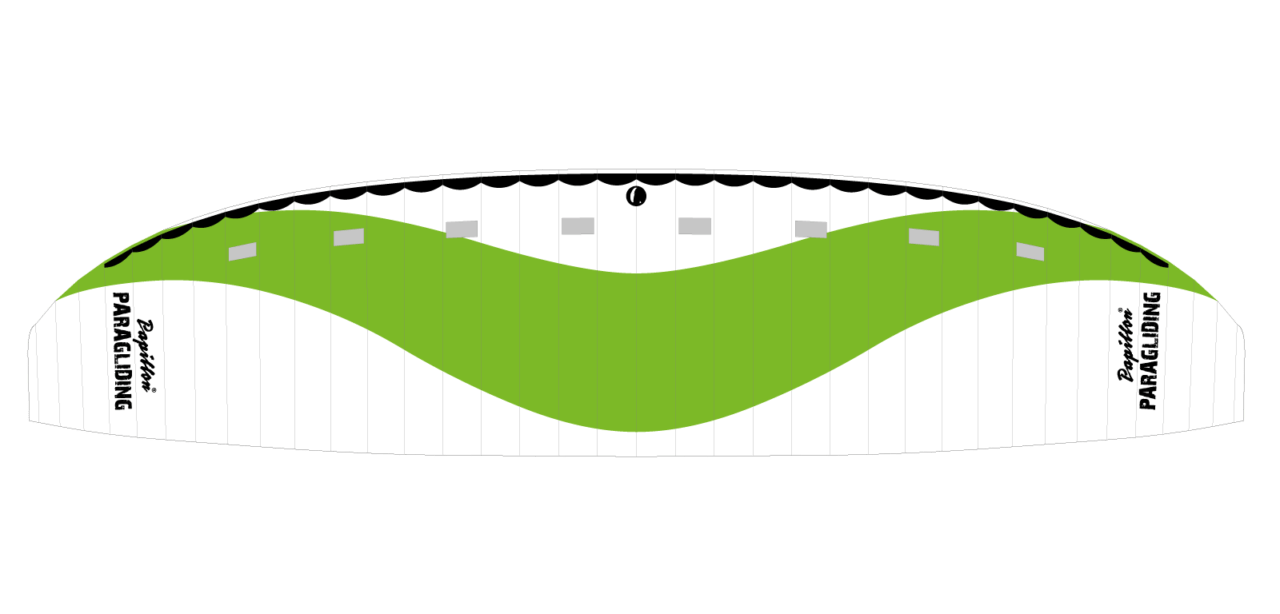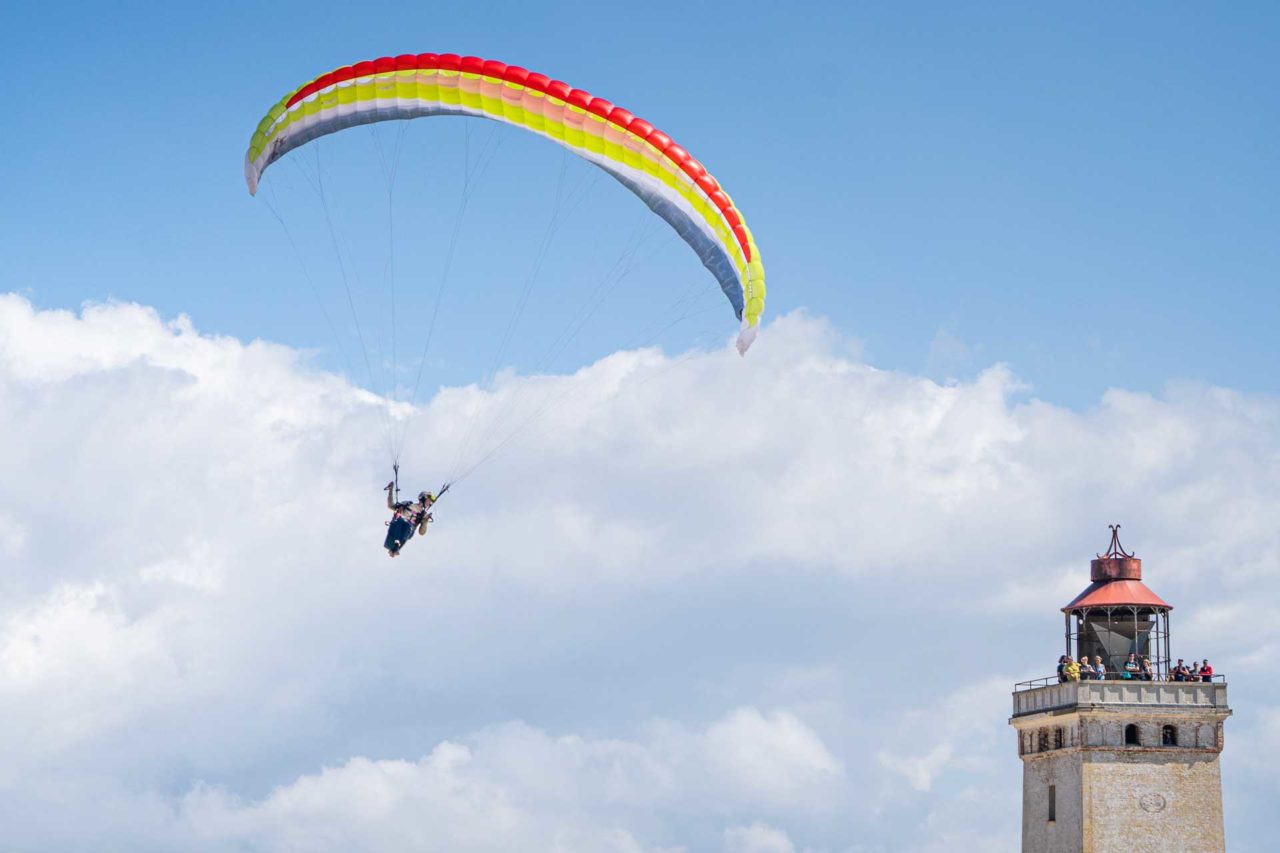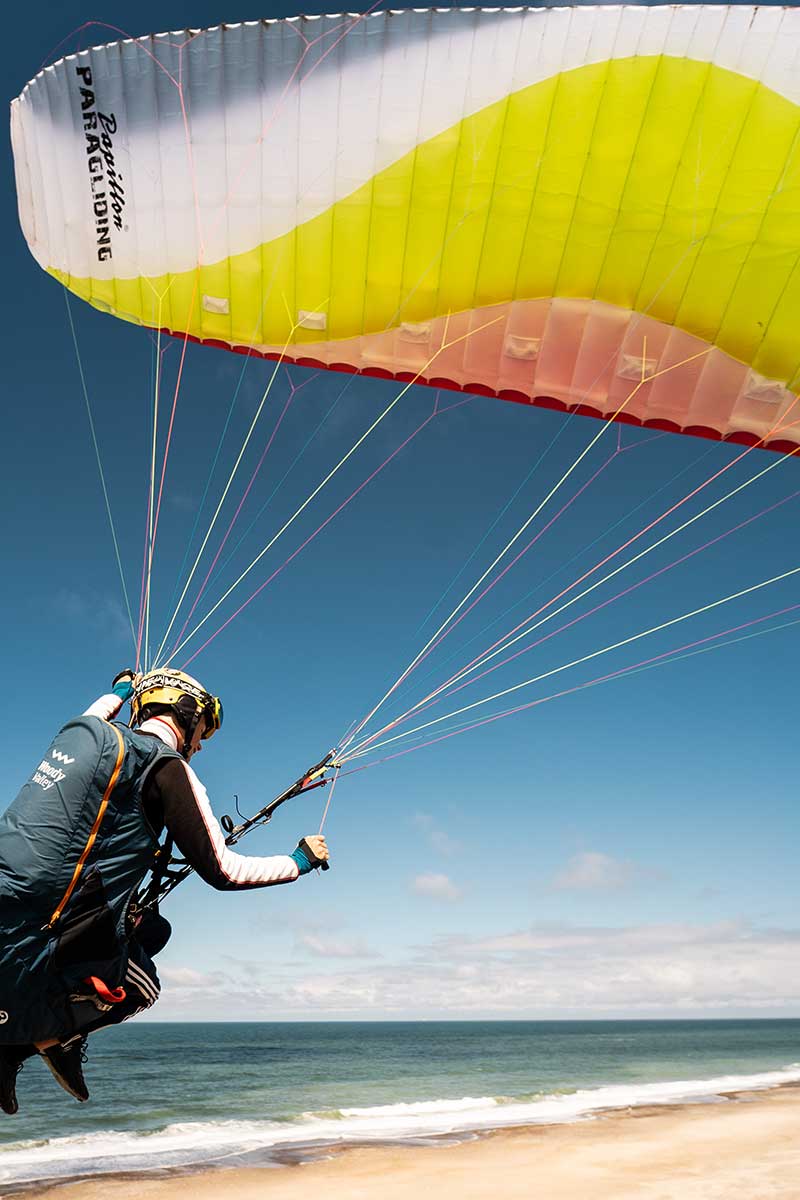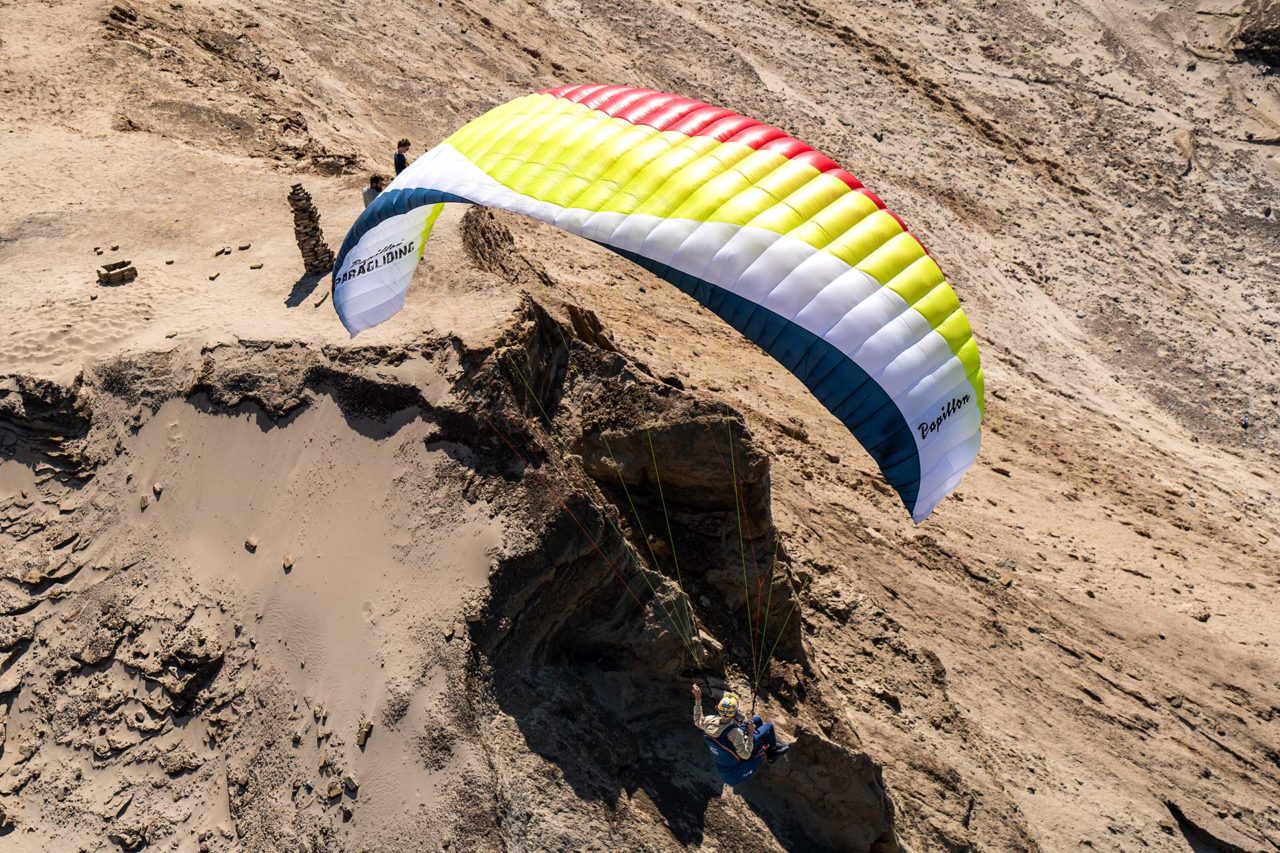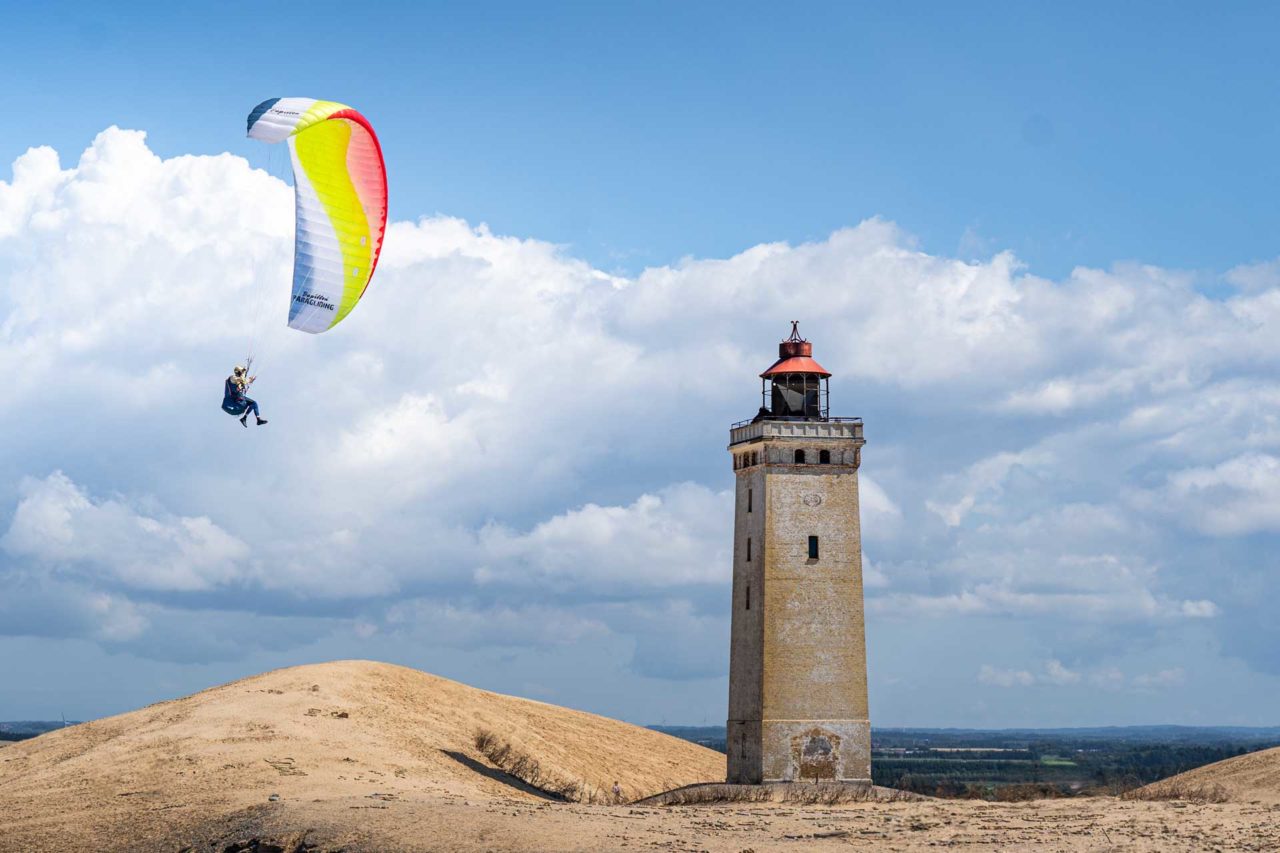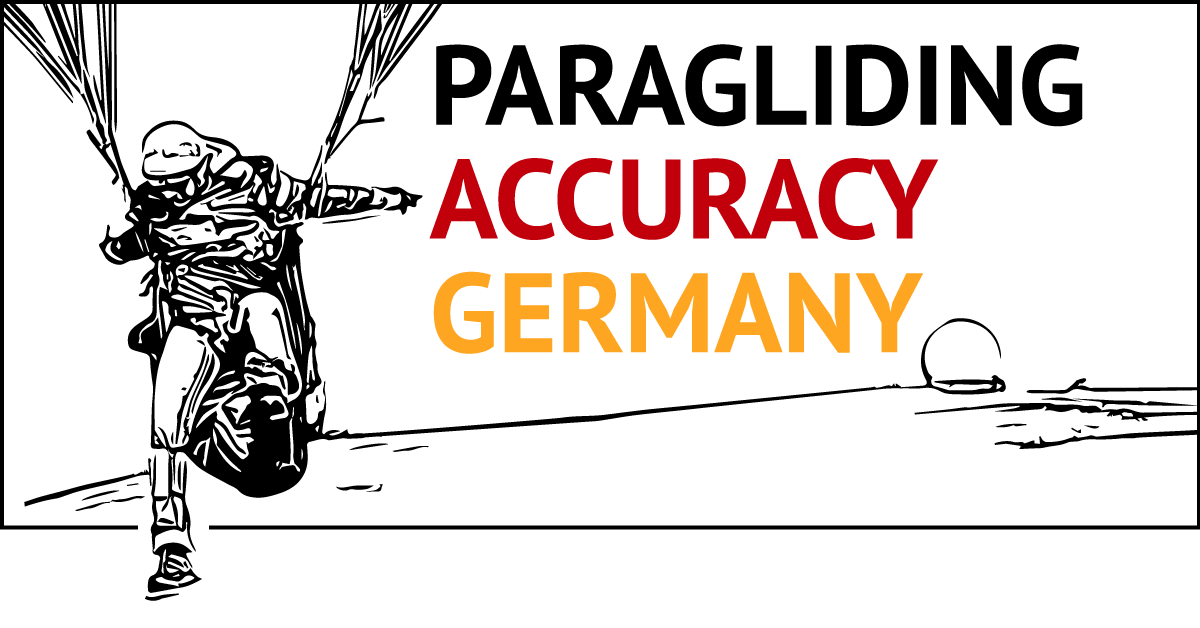Fancy a hike & fly?
The Himalaya 2 is the new super-light highend-EN-A paraglider for the 2024 season.
With the successor to the successful model, designer Ernst Strobl has created a phenomenally good wing at the top end of the A-Class performance spectrum.
Would you like to set off from remote launch sites on long cross-country flights? And already have some flying experience?
Then the extremely light Papillon Himalaya 2 is our recommendation for you in the high-end A segment!
The Himalaya 2 makes the perfect statement of simplification and redefines mobility. There are no limits to your goals, the ultra-light hi-tech high-end A-wing is just as hungry for cross-country flights as it is for radical hike & fly adventures and extended journeys to remote take-off sites.
Super light – not just for competitors and mountain sports enthusiasts
Thanks to its excellent safety, this wing is also the top recommendation for all pilots who want to fly in the low-B segment in terms of performance but do not want to do without the safety of the EN-A class.
Mobility, flexibility, independence.
Minimal weight and easy handling – the ultra-light high-end A-wing is the perfect all-round wing for your adventures. Thanks to your Himalaya 2, you can master extended hike & fly trips and flights from the most remote take-off sites with ease.
Even occasional pilots and hike & fly beginners will get their money’s worth with the Himalaya 2. The risers are equipped with the Multiple Speed System (MSS) – a second pulley can be used to shorten the travel of the speed bar and convert it into an LTF-A hike & fly wing suitable for training.
Despite its good-natured behaviour, the Himalaya 2 has excellent glide characteristics, sporty handling and implements control impulses precisely. This is further favoured by the minimal canopy weight. Its take-off characteristics also benefit from the lightweight canopy: even in difficult conditions, the Himalaya 2 climbs above the pilot as if by itself and takes off at low speed and therefore after a short take-off distance.
Professionals trust the Himalaya 2
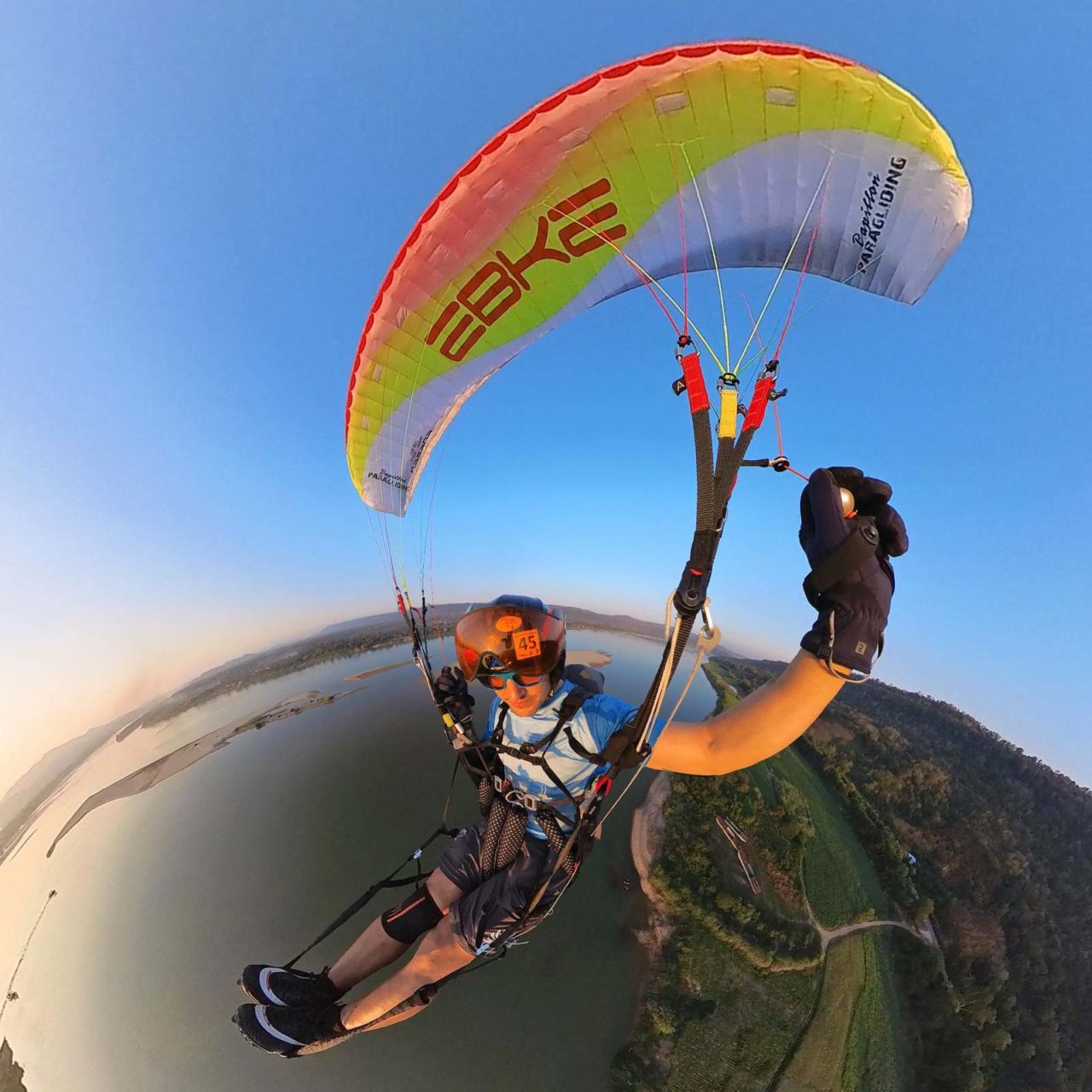
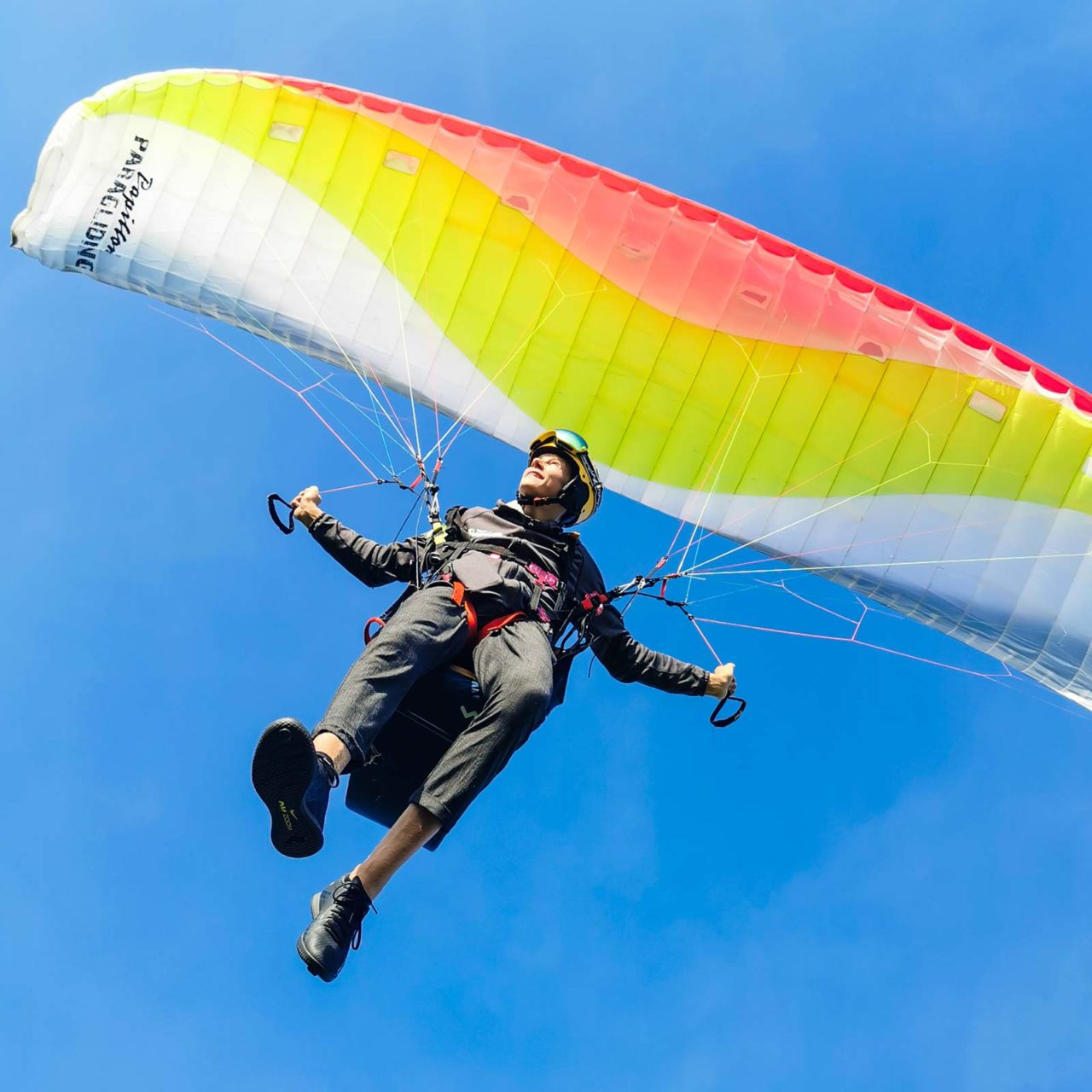
The reigning Spanish champion Víctor Rodríguez Santamarta will fly the new Papillon Paragliders Himalaya 2 in the 2024 season.
Other pilots with the new Himalaya 2: Vice World Champion, World Cup winner and Vice European Cup winner Linus Schubert, Vice World Cup winner Andreas Schubert, French Champion, 3rd overall World Cup winner Pascal Piazalunga and many more.
Features

Clearly marked bands with colors and icons based on the Pilot Assistants Concept (PAS) help to quickly find the correct line level for each maneuver.

The innovative Automatic Flight Stabilisation (AFS) system intervenes when the air becomes turbulent. This technique is made possible by a precise calculation of the sail pre-tension at the wingtip.

Thanks to the Extended Aeration System (EAS), the additional openings in the upper sail are closed during normal inflow. This is ensured by the internal pressure and the air vortex created by the inflowing air in the front area of the wing profile.

The risers are equipped with the Multiple Speed System (MSS) – by adding a second pulley, the speed path of the speed bar can be shortened and thus converted into a training-ready LTF-A Hike&Fly glider.

The Precision Profile Nose (PPN) provides excellent launch characteristics and high edge traction in flight.

The High Pressure Crossport Design (HPCD) allows good air distribution and pressure equalization within the wing and increases the folding stability of the cap.

MiniriMiniribs (MRB) and the Brake Gathering System (BGS) transmit control impulses to the wing with high efficiency and precision.
Scope of delivery
- Paraglider
- Inner packing bag
- Compression strap
- Manual (PDF)
Technical data
| PAPILLON PARAGLIDERS Himalaya 2 | |||
| Size Größe | S (24) | SM (26) | M (28) |
| Takeoff weight over all ** Startgewicht ** | 65-95 kg | 80-110 kg | 95-125 kg |
| Recommended takeoff weight ** Empfohlenes Startgewicht ** | 65-85 kg | 80-100 kg | 95-115 kg |
| Hike&Fly takeoff weight *** Hike&Fly Startgewicht *** | 95-110kg | — | — |
| Flat area Fläche ausgelegt | 24,5m² | 26,5m² | 28,5m² |
| Projected area Fläche projiziert | 20,124m² | 21,767m² | 23,41m² |
| Flat wingspan Spannweite ausgelegt | 11,012m | 11,453m | 11,877m |
| Projected wingspan Spannweite projiziert | 8,439m | 8,776m | 9,101m |
| Number of cells Zellenanzahl | 38 | 38 | 38 |
| Flat aspectratio Streckung ausgelegt | 4,95 | 4,95 | 4,95 |
| Projected aspectratio Streckung projiziert | 3,539 | 3,539 | 3,539 |
| Max. Cord Max. Flackebntiefe | 2,637m | 2,743m | 2,844m |
| V-Trim * Geschwindigkeit-Trimm * | 38 – 41 km/h | 38 – 41 km/h | 38 – 41 km/h |
| V-max * Geschwindigkeit-Max. * | 51 – 54 km/h | 51 – 54 km/h | 51 – 54 km/h |
| Bridle length Gesamt Leinenlänge | 232,82m | 242,79m | 252,392m |
| Bridle height Abstand Tragegurt-Kappe | 6,718m | 6,986m | 7,245m |
| Line diameter Leinenduchmesser | 0,6 / 0,8 / 1,0 / 1,2 1,4 / 1,6 / 1,8 mm | 0,6 / 0,8 / 1,0 / 1,2 1,4 / 1,6 / 1,8 mm | 0,6 / 0,8 / 1,0 / 1,2 1,4 / 1,6 / 1,8 mm |
| Number of risers Anzahl Traggurte | 3+1 | 3+1 | 3+1 |
| Glider weight Schirm Gewicht | 3,1 kg | 3,3 kg | 3,5 kg |
| Beschleunigungssystem / Trimmer Speedsystem / Trimmer | No / Yes | No / Yes | No / Yes |
| Certified standards and procedures Angewandte Testverfahren | EN 926-1:2015, EN 926-2:2013+A1:2021 and NfL 2-565-20 | EN 926-1:2015, EN 926-2:2013+A1:2021 and NfL 2-565-20 | EN 926-1:2015, EN 926-2:2013+A1:2021 and NfL 2-565-20 |
| Certification ** Zulassung | EN-A / LTF-A | EN-A / LTF-A | EN-A / LTF-A |
| Certification *** Zulassung *** | EN-A / LTF-B | ||
| Certification No. Zulassungsnummer | PG_2224.2023 | PG_2223.2023 | PG_2222.2023 |
Test report by Andreas Schubert
The Himalaya 2 is the new super-light EN-A paraglider for the 2024 season.
Designer Ernst Strobl has succeeded in creating a phenomenally good wing at the top end of the performance spectrum. Weighing just 3-4 kg depending on size, the Himalaya 2 is not just the perfect paraglider for competitors and mountain sports enthusiasts.
Its excellent safety also makes this wing the top recommendation for all pilots who want to fly in the low-B segment in terms of performance and for whom the safety of the EN-A class is important at the same time.
The 16-year-old world championship runner-up Linus Schubert has flown the new Himalaya 2 with an identical prototype from the type certification since his World Cup participation in Kazakhstan in June 23 and finished his season in second place in the world rankings at the World Championships.
The wing is very good and easy to launch thanks to the A-plane control on the underside of the profile and its light canopy weight. The take-off speed with a slightly braked canopy is low in comparison to the rest of the class.
The low sink rate makes it a powerful performer in thermal air. The Himalaya 2 climbs phenomenally well, so there is no advantage over other paragliders in higher categories. The glider is a fast and therefore also very manoeuvrable representative of its class and, due to these characteristics, marks the top performance spectrum of the EN-A class.
The wing has its own straps for putting on the ears. The ears are easy to put on, open automatically and are an efficient manoeuvre in conjunction with the speed system.
One-sided collapses are very rare due to the very high canopy stability. Up to 50% collapse depth, the canopy flies straight ahead with a passive pilot. Only at 60% collapse depth do weight shifting and light counter-braking help. The canopy reopens immediately – without an inclination of the counter-flap.
Accelerated collapses are also easy in comparison, so that the wing has also received an EN-A rating in the upper and therefore very dynamic range.
The tendency to spin is very low due to the above-average speed in the class (approx.
speed (about plus 5% in the lower third to middle weight range).
The wing reacts particularly well to stalls. Linus is a master of flying at the stall point. With my many years of flying experience and thousands of stalls, I also have to give the wing top marks.
Even before the glider is released again, the current is back on. A flyback is just as easy as the pre-inflation is low, which is typical for the class. This is also a subtle hint for talented pilots who are also interested in groundspins and getting into flying at the edge of the glider’s limits.
The front stall simply leads out – without any tendency to get into a rosette.
The wing has already been extensively tested: Overall, in more than 2000 flights, no situations have arisen that are even remotely comparable to a collapse over 50% or a front stall.
In the meantime, pilots from the Spanish and French teams are also flying the new Himalaya 2 – especially because of its wonderful landing behaviour. Thanks to the speed range, the canopy can be flown very well and therefore – with a little training – can be landed practically standing on the spot.
The control travel is linear, typical of the class, and increases significantly towards the stall. The control travel is shorter for the class, but longer than with EN-B wings.

CEO Papillon
Recommendation
Himalaya 2 EN-A:
- as a second glider
- for hike and fly
- thermal pilots
- talented beginners
- frequent flyers who value maximum safety combined with maximum performance.







